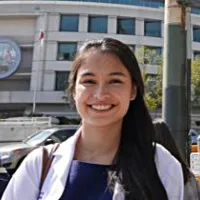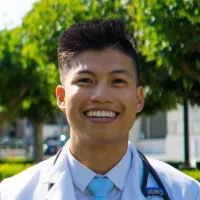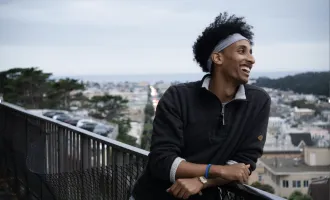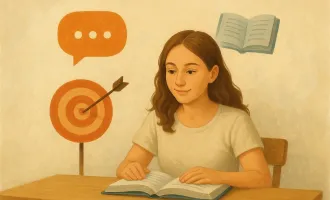Treating the Whole Family For COVID
Noah writhes in his hospital bed. Largely non-verbal and living with severe intellectual disability, he moans repeatedly in pain as his nurse adjusts his morphine. His mother appears on the iPad we’re holding. “Noah, it’s Mommy. Mommy loves you so much.”
He stays still and doesn’t make a noise. This is the first time he has seen his mother’s face in weeks.
In normal circumstances, she would have been beside his hospital bed. Instead, we occupy this space, a group of volunteer medical students armed with iPads.
Due to visitor restriction policies in hospitals at the start of the COVID pandemic, patients like Noah found themselves both physically and socially distanced from their loved ones in a time when they were most in need of social support.
Simultaneously, the pandemic brought the traditional medical school curriculum to a halt, creating extra time for medical students like us to support the hospital system in non-traditional roles.
To aid patients experiencing social isolation, our team of medical students and residents facilitated bedside video calls between patients and their loved ones.
This has put us in the middle of intimate moments between families. For Noah, we saw the healing calm a loved one’s face could bring, as he spoke the single phrase we heard the entire visit: “I love you.”
For Mrs. L, we were there as she reminisced with her siblings in her final days of life. For Mr. S, we witnessed his personhood amidst his delirium when he recognized his wife for the first time in days and softly sang her favorite song.
These moments, free from the worry of differential diagnosis formation or data gathering, remind us firsthand that healing patients often requires healing families.
Inpatient hospitalization is an inherently traumatizing experience for both the patient and their social support network, one that is often left unaddressed.
This has only worsened during the pandemic. With physicians’ time stretched thin over increasing clinical demands, there is space and need for students to fill gaps in family involvement both during and outside of this pandemic.
Our experiences at patients’ bedsides during the beginning of the pandemic have brought this concept to light at a timely moment — a pause in the hubbub and new responsibilities of our clinical rotation year.
COVID-19 has transformed our education by refocusing us on the psychosocial components of healing for a patient and their community. Students can help reduce this psychosocial stress by pausing to ground ourselves in our patients’ social context, both during and outside the pandemic.
As the new class of medical students embark on their clinical rotations, we encourage them to recognize that we are uniquely positioned within the medical team to devote time to patients and their families, promoting healing for all affected parties.
After an hour, Noah’s mom tells us that she is ready to end the video call. “Sometimes I think I need these calls more than him.”





